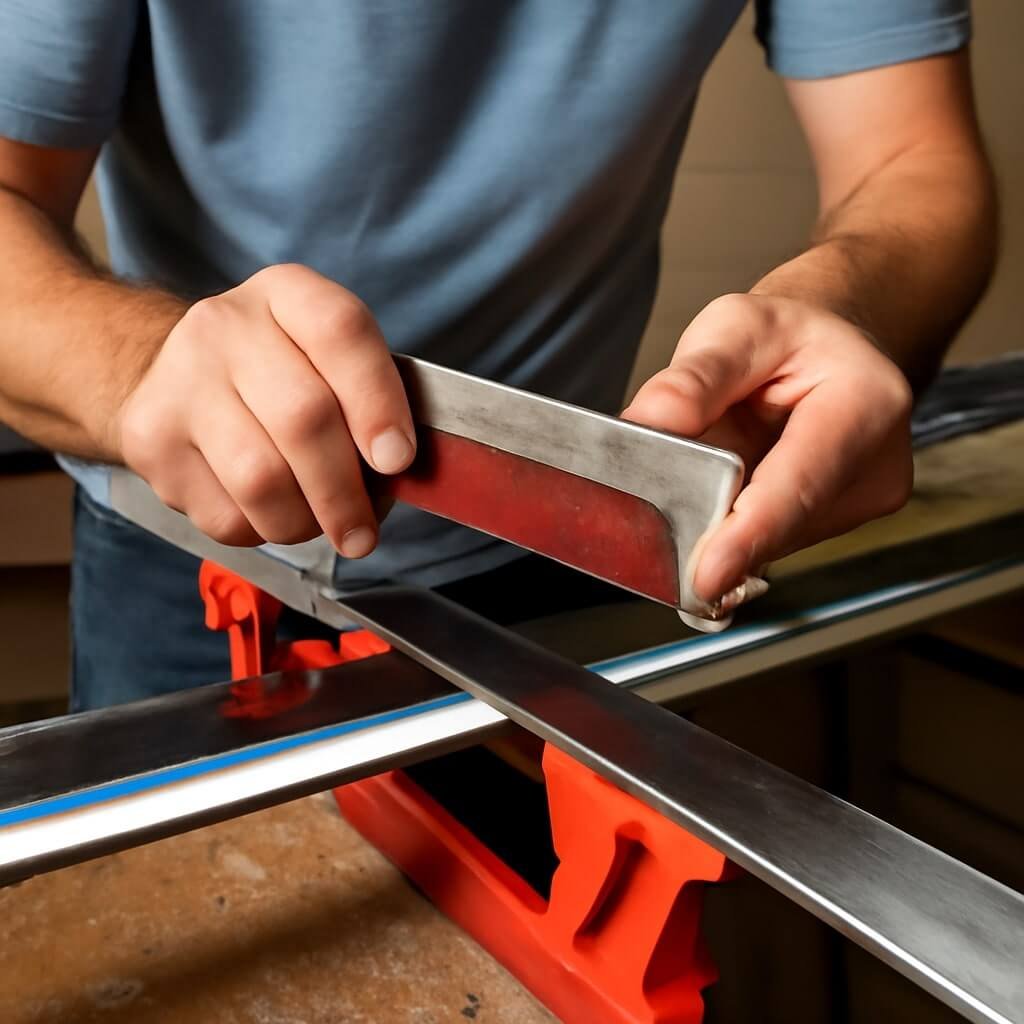Sharpening your skis at home is a vital skill that can significantly enhance your performance on the slopes. Whether you’re an avid skier or just starting, knowing how to sharpen skis at home allows you to maintain control, safety, and speed during your runs. This comprehensive guide covers everything from essential tools to step-by-step instructions, common mistakes to avoid, and maintenance tips that will keep your skis in prime condition.
Understanding the Importance of Ski Edge Sharpening
Ski edge sharpening is more than just a maintenance task—it directly impacts how your skis interact with the snow and ice. Sharp edges offer a superior grip, allowing you to carve turns with precision and confidence. On the other hand, dull edges can cause slips, poor turning, and even accidents.
How Ski Edges Affect Your Performance
Edges are the metal strips running along the sides of your skis. When they’re sharp, they bite into hard-packed snow or ice, providing traction and control. This grip is essential when making quick turns or stopping abruptly. Sharp edges help maintain speed while still allowing you to navigate safely through icy or challenging terrain.
Risks of Dull Ski Edges
Ignoring edge maintenance can lead to serious issues. Dull edges reduce your ability to control your skis, increasing the risk of falls or collisions. It also results in frustration as you struggle to maintain balance or execute turns effectively. Additionally, worn edges can cause uneven wear on the ski base, leading to costly repairs or premature replacement.
Essential Tools Needed to Sharpen Skis at Home
Before diving into sharpening, you need the right tools to do the job correctly and safely. Using improper tools can damage your skis or result in uneven sharpening.
Ski Edge Sharpener Files
These are specialised files designed for ski edges. They come in various grits and sizes—diamond-coated files are especially popular for a fine finish. Using a file with the correct grit ensures you remove just enough metal to sharpen without overdoing it.
Ski Vise
A ski vise securely clamps your skis in place while you work on them. This tool prevents movement, giving you better control and accuracy during sharpening.
Other Accessories
Additional helpful tools include diamond stones for polishing edges, edge bevel guides to maintain consistent filing angles, and a soft brush or cloth to clean away metal filings.
Step-by-Step Guide: How to Sharpen Your Skis
Sharpening skis at home may seem daunting at first, but with patience and the right approach, it becomes straightforward. Here’s how you can do it:
Preparing Your Workstation
Find a clean, well-lit area with a sturdy workbench or table. Make sure you have enough space to work comfortably, and gather all your tools before starting.
Inspecting Your Ski Edges
Carefully check your ski edges for any rust, burrs, or deep nicks. If damage is severe, professional repair might be necessary.
Clamping Your Skis
Place the skis in the vise with the edges exposed and the bases secure. The skis should be stable and not move as you file.
Filing the Ski Edges
Using your ski edge file, start filing along the edges at a consistent angle—typically between 88 to 90 degrees, depending on your preference. Use smooth, long strokes from tip to tail, applying even pressure. Avoid over-filing one area to prevent uneven edges.
Using Diamond Stones for Finishing
After filing, use a diamond stone to polish the edges. This step smooths out burrs and sharpens the edges further, enhancing glide and control.
Checking Your Work
Run your finger gently along the edges (careful not to cut yourself) to feel for sharpness and uniformity. You can also test on a piece of scrap wood or gently press the edge into ice.
Maintenance Tips to Keep Your Skis Sharp Longer
Once sharpened, proper maintenance extends the life of your edges and keeps your skis ready for action.
Regular Edge Checks
Inspect your edges frequently during the ski season, especially after hitting rocks or rough terrain. Regular minor touch-ups can prevent major dullness.
Proper Storage
Store your skis in a dry environment to prevent rust. Avoid stacking skis directly on top of each other without protection.
Waxing After Sharpening
Applying wax after sharpening helps protect the bases and edges from corrosion. It also improves your ski’s glide on snow.
Common Mistakes to Avoid When Sharpening Skis
Sharpening skis at home requires some care. Avoid these pitfalls:
Over-filing
Removing too much metal can weaken the edges and shorten ski life. Always file conservatively and check progress frequently.
Ignoring Ski Conditions
If your skis have major damage or rust, home sharpening won’t fix everything. Sometimes professional tuning or replacement is the best option.
When to Seek Professional Ski Tuning
While home sharpening is useful, professional tuning offers benefits for serious skiers or those with damaged skis.
Signs You Need Expert Help
Deep nicks, bent edges, or base damage require specialised tools and skills. If your skis aren’t performing despite home care, visit a pro shop.
Cost vs. Benefit of Professional Services
Professional tuning costs money but often includes edge sharpening, base repair, waxing, and cleaning. It’s worth it for performance and longevity.
Frequently Asked Questions (FAQs)
How often should I sharpen my skis?
For regular skiers, sharpening every 4-6 ski days is typical. If you ski on icy or hard-packed snow, sharpen more frequently.
Can I use regular files to sharpen ski edges?
No. Regular files can be too coarse or too soft. Use ski-specific edge files designed for metal ski edges.
What angle should I file my ski edges at?
Common angles are between 88° (more grip) to 90° (easier turning). Beginners often prefer around 89°.
Does sharpening improve ski speed?
Sharpening primarily improves control and grip rather than outright speed, but better control can indirectly increase your confidence to ski faster.
Is it safe to sharpen skis at home?
Yes, with proper tools and safety precautions. Always work slowly, keep your fingers away from edges, and clamp skis securely.
How do I know if my skis need sharpening?
If you notice slipping on turns, difficulty controlling speed, or visibly dull/rusted edges, it’s time to sharpen.
Conclusion
Learning how to sharpen skis at home equips you with the power to maintain your gear and elevate your skiing experience. With the right tools, careful technique, and regular maintenance, your skis will stay sharp and ready to perform. Remember to balance home sharpening with professional tuning for optimal results. Sharpen those edges, hit the slopes with confidence, and enjoy every turn!













